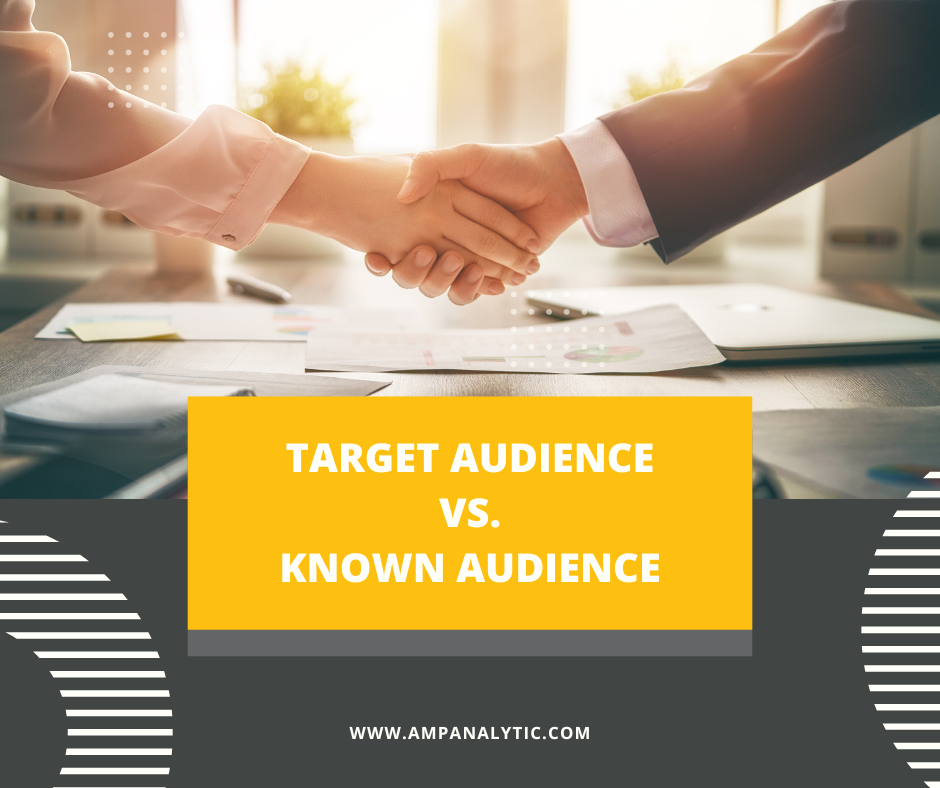
In marketing, you can advertise to a target audience or a known audience. Which audience you choose will impact your advertising costs, response rates, and ROI. Each one serves a purpose. Before choosing which audience to use in your next campaign, consider these benefits and challenges.
Target Audience
A target audience is most commonly used in digital marketing. When you set up a digital marketing campaign, whether using social media, paid search, or display, you will be asked to select an audience. You can choose from a variety of demographics such as geographical area, age range, gender, income, device type, etc. Each selection you make will narrow down your audience from everyone available on the platform to a particular group.
It’s important to call out that target audience totals represent the potential reach but does not guarantee that number of people will see your ad. You might have 100,000 people in your audience, but digital advertising is based on who is active on the advertising platform you are using during the campaign.
For example, let’s say you have a target audience of 100,000 people and choose to advertise on Facebook and Instagram for 1 week. During your campaign, only 80,000 people are active on those social platforms. Your actual reach is 80,000.
Target Audience Benefits
Selecting a target audience allows you to focus your marketing efforts on people who are more likely to respond to your offer. It also helps you predict marketing spend as well as keep you within the project’s budget.
Target Audience Challenges
The challenge with using a target audience is that you won’t know who is actually served ads. The marketing platform will serve the ad to individuals who fall within your set demographics, but it will shield their information from you. You can see the general demographics of the target audience and their response rates to the ad. However, if someone makes a purchase but doesn’t use the ad’s URL or coupon code, you won’t be able to attribute their transaction to the campaign.
The same goes for response rates. Your response rates will be limited to who actually interacted with the ad. The people who saw the ad and responded in an alternative manner won’t be captured in the campaign results.
Known Audience
A known audience is traditionally found in direct mail or email campaigns, but newer technology allows digital marketers to target selected individuals through other digital channels. With a known audience, you will have a marketing list that includes people’s name and postal or email addresses. These lists are either accumulative from past sales over time, purchased from data providers, or a combination of the two.
If you accumulate data but are missing information, you can have data compilers append missing information to your current records. A known audience gives you a precise number of people who will receive your advertisement.
Known Audience Benefits
Using a known audience means you know exactly who you are targeting. When your campaign is over, you can match up your transaction file with your marketing list and identify accurate response rates. You can understand not only who interacts with your campaign but also who acts on your offer. Having a known audience allows you to see true ROI on campaigns. This type of audience will provide you with more data, so you can analyze it and adjust future marketing list to look more like your responders.
Known Audience Challenges
The biggest challenges to consider when using a known audience are costs and time. When you use a known audience, you will receive a list of data records. Getting an actual list will cost more than selecting a group of people through a digital advertising platform. Data providers can offer lists with a handful demographic selections to modeled data lists that factor in thousands of variables to provide you with the top prospect records for your particular business. Modeled data is the highest quality of data since it’s custom selected, but it will also require the most time to pull together.
Decision Factors
When deciding which type of audience to select, consider your budget and goals. A target audience will be a faster and more cost effective solution. This type of audience is great for campaigns that need to happen quickly. Keep in mind you won’t have a list of records that were targeted. After the campaign is over, sales attributions will be based on estimates.
A known audience will take a little longer to gather up and may cost more, but you will be able to see exactly who responded. Because you know who responded, you can analyze their records and adjust your marketing to strategy to reach more people like your customers.
At Analytic Marketing Partners, we help companies identify their best prospects and market to known individuals on a 1:1 level. If you would like more information on how we can help you grow, reach out to our team.
